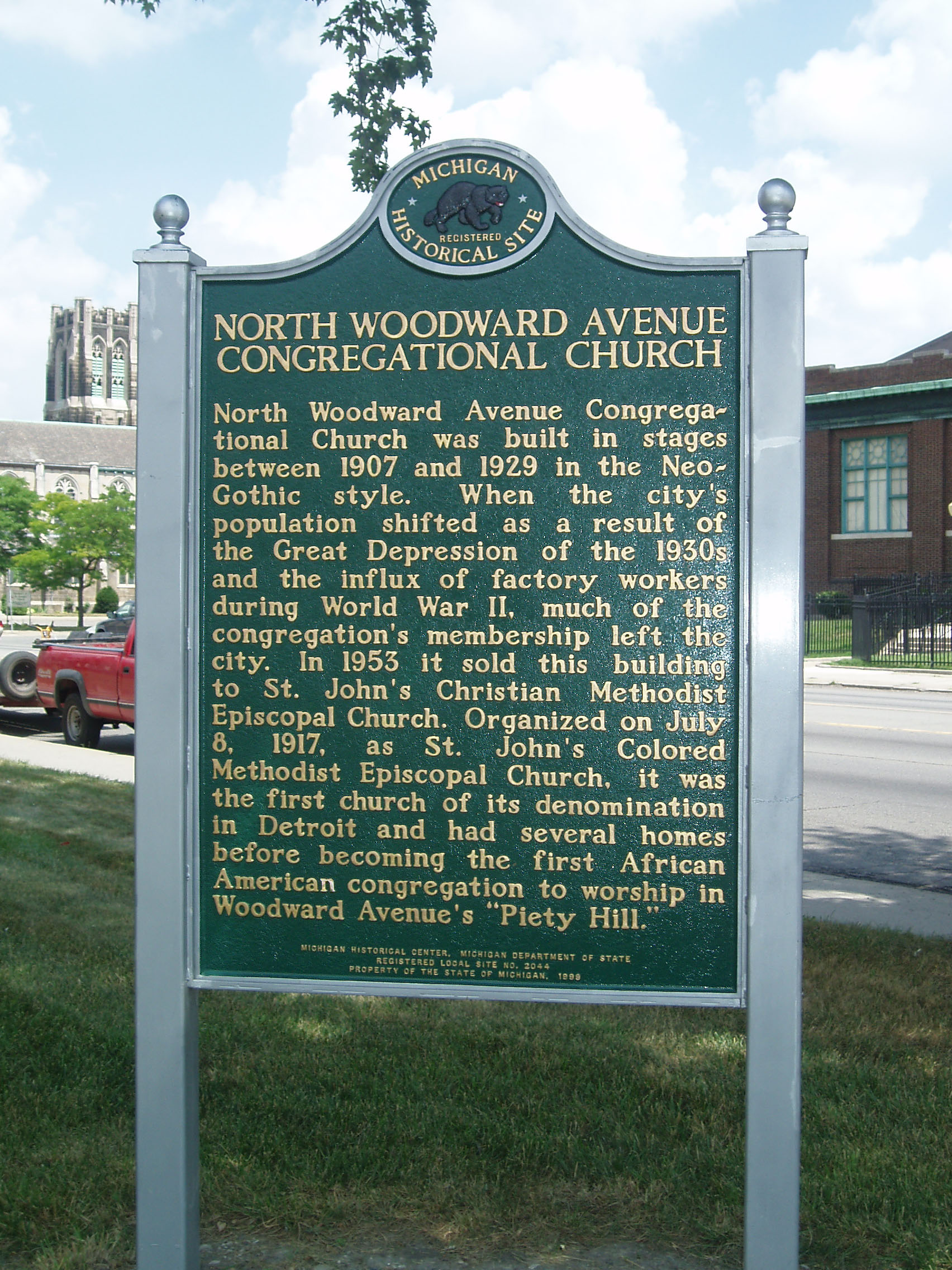

John Wesley’s efforts to reform the established Episcopalian
church spread throughout the South in the early- and mid-Nineteenth Century.
Most adherents
were white southerners, even though Methodist teachings strongly condemned
holding others in bondage. In that century, some blacks—free and enslaved—accepted
the emerging Methodist religion. In much of the South, this denomination
was
known as the Methodist-Episcopal Church, reflecting John Wesley’s Episcopalian
beliefs. In Philadelphia at the start of the Nineteenth Century, Richard Allen
led the development of congregations for blacks, namely, the African Methodist
Episcopal church that has been well established in Detroit since before the
Civil War.
Following Emancipation, some black men active in the South’s Methodist-Episcopal Church wished to establish their own denomination. As I understand it, there was no disagreement about theological issues, rather it was a racial issue. Forty-one men met in Jackson, Tennessee and, on December 20, 1870, chartered what came to be the Colored Methodist Episcopal Church. Apparently they received help from the white leaders of the Methodist-Episcopal Church, but I do not know if the motivation for establishing this racially separate denomination came primarily from the white or black leaders of the southern Methodist congregations. In 1954, the Colored Methodist Episcopal Church officially changed their name to the Christian Methodist Episcopal Church but their former name is still widely used.
The Colored Methodist Episcopal (CME) Church grew and prospered in the South, but its development in Detroit awaited the arrival of southern blacks during the World War I boom. In 1917, the Reverend O. L. Mitchell came to establish a CME mission. He selected the name St. John in honor of the Apostle who is credited with successfully establishing Christian churches throughout Asia Minor. The first CME church in Detroit was a brick church located near the intersection of DuBois and Catherine on the near East Side that had been erected in 1883 for the First German Evangelical Association Church. Membership grew rapidly, thanks, perhaps, to the effective preaching of the pastor and the continued migration of southern blacks to work in the city’s factories. By 1920, a larger facility was needed, so the CME congregation purchased the former home of St. Mark’s English Evangelical Lutheran Church, also located near the intersection of Dubois and Catherine. The congregation used that facility until 1955 when they purchased the church that was vacated by the North Woodward Avenue Congregationalists. This was the first church in Detroit’s Piety Row to undergo the racial switch from white to black.
The church you see was built in stages. The Congregationalists
apparently put up a small chapel on this site as early as 1907. Construction
of the main
sanctuary began in 1911 and was completed the next year. Additional building
followed, with the church house being the most recent addition, one that was
completed in 1929. The architect, Hugh Clement, designed a very attractive
church with his choice of red brick and limestone trim. Unlike many Gothic
churches, it is a low-rise building since it lacks a bell tower or lantern.
North Woodward Congregational was among the churches to be constructed along
upper Woodward Avenue reflecting the growth of prosperous neighborhoods in
this section of Detroit. By the end of the 1920s, this Upper Piety row included
the following congregations:
Metropolitan United Methodist
8000 Woodward (1926, English Gothic, William Hunter)
Woodward Avenue Presbyterian
8501 Woodward (1911, Gothic Revival, Sidney Badgley)
First Baptist Church of Detroit/People’s Community Church
8601 Woodward (1910, Neo-Gothic, Guy Vinton)
North Woodward Congregational/St. John Christian Methodist Episcopal
8715 Woodward (1911, Neo-Gothic, Hugh Clement)
Temple Beth El/Lighthouse Cathedral
8801 Woodward (1921, Classical Revival, Albert Kahn
St. Joseph’s Episcopal/St. Matthew’s Episcopal
8850 Woodward (1926, English Gothic, James Nettleton)
Central Woodward Christian/Little Rock Missionary Baptist
9000 Woodward (1928, Modern Gothic, George Mason)
Cathedral of the Most Blessed Sacrament
9844-9988 Woodward (1919, Neo-Gothic, Henry Walsh)
Grace Evangelical Lutheran
12375 Woodward Highland Park (1929, Gothic Revival, Adam Fichter)
Trinity United Methodist/New Mount Mariah Baptist
13100 Woodward Highland Park (1923, Gothic Revival, George Mason)
Highland Park Presbyterian
14 Cortland Street at Woodward, Highland Park (1911, Gothic Revival,
Sidney Bagdley and William Nichols)
First United Methodist
16300 Woodward Highland Park (1917, Gothic, William Hunter)
The City of Detroit Local Historic District includes the church that you see and a row of nine homes on Gladstone near its intersection with Woodward.
Architect: Hugh B. Clement
Architectural style: Neo-Gothic
Date cornerstone put in place: 1911
City of Detroit Designated Local Historic District: Listed April 27, 1988
State of Michigan Registry of Historic Places; P2429 Listed September 3, 1998
State of Michigan Historical Marker: Erected: January n6, 1999. Visible at
the corner of Blaine and Woodward
National Register of Historical Places: #82002905, Listed 1982
Use in 2006: Church
Website: http://users.aol.com/churchwww/stjohn.htm
Photograph: Ren Farley
Description: Prepared December, 2006